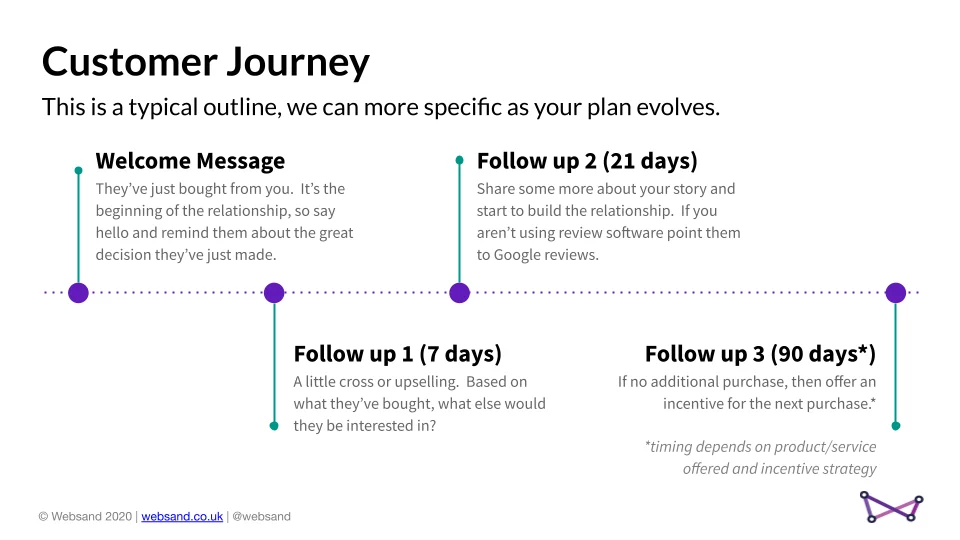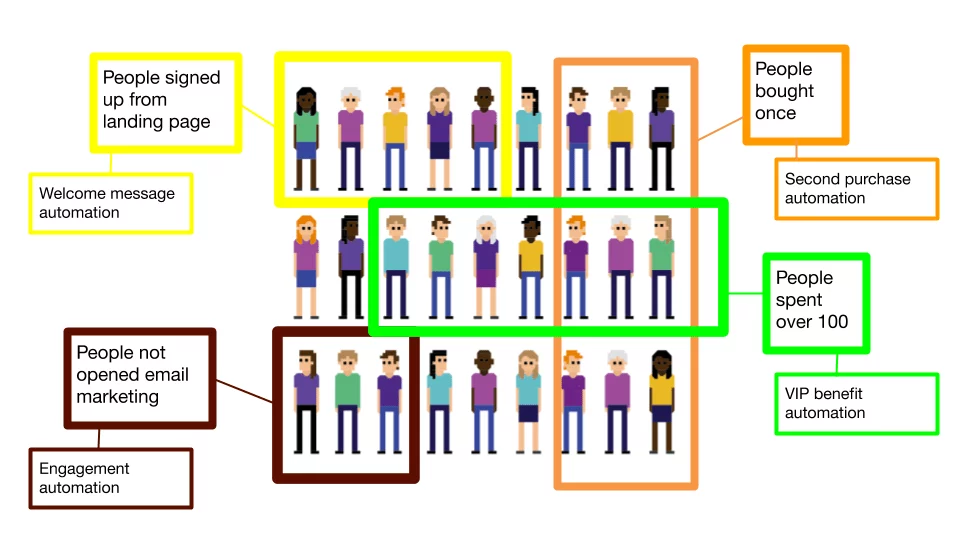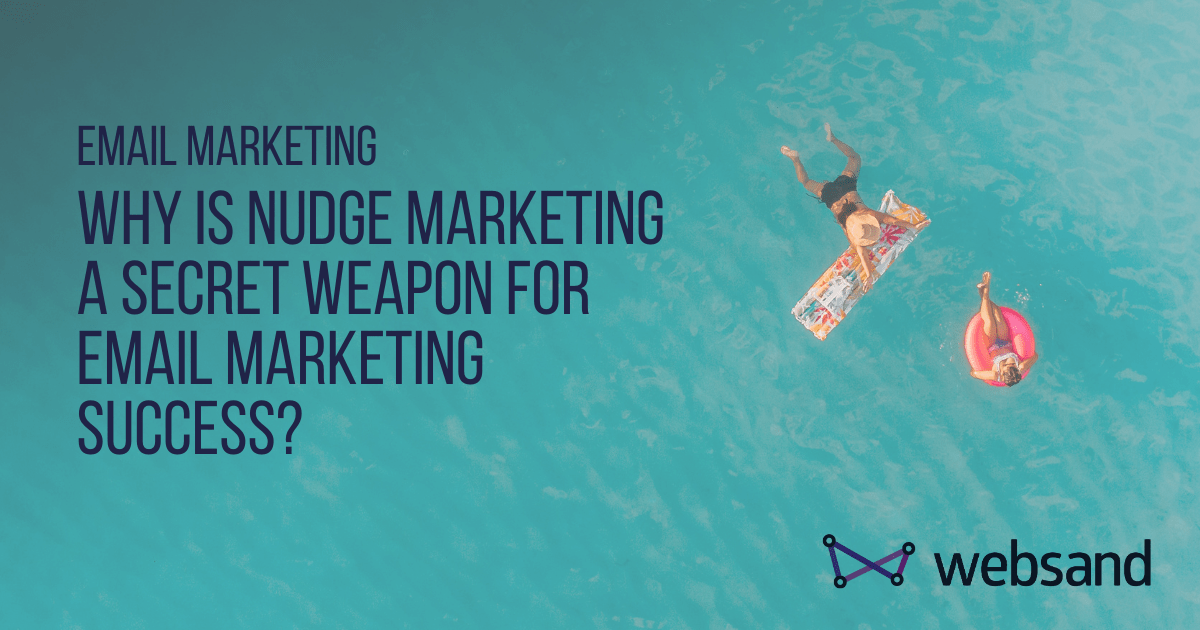Email Marketing or Nudge Marketing?
According to Seth Goden in a recent blog post, “the purpose of marketing is to cause change”, and no matter what marketing channel we decide to adopt, “these are all marketing activities that exist to change the way people act”.
Changing the way that people act, sounds a bit scary, since most marketers just want to meet their objectives rather than change the world, so let’s downgrade it a bit to getting people to make the desired response.
So how do we get people to make the desired response?
In all aspects we are looking to stimulate behaviour, sometimes the impact can be immediate, sometimes it needs to take place over a series of actions.
We might not normally think of marketing in this way, but especially for email marketing, we are creating a series of nudges. So I guess every email campaign is a nudge marketing campaign.
Little things making a massive difference
In the 1990s, a cleaning manager at Schiphol Airport wanted to cut down on mess around the public urinals. They were, quite frankly, horrendous. How could he get people to aim better, so his staff had less to clean?
Apparently, the drain wasn’t enough of a target to aim for. People needed something better. So, he gave them one. The airport added small etchings of flies to the urinals. Flies aren’t as scary as spiders, but they’re unsanitary enough to want to pee on them. This simple tactic cut down on mess around the urinals by a whopping 80%.
It might sound gross, but this is what’s known as a nudge. It’s a simple change that makes it easy for people to take the desired action.
Nudges are also your secret weapon for email marketing success. Let’s find out why.
What’s a nudge, then?
Nudges are subtle cues for people to perform a desired behaviour. The lines painted on the road are an excellent example. If you want everyone to drive on the same side of the road, give them a simple way to know where that is.
We can define nudges as environmental changes to influence the choices people make. That environment can be the physical environment—like flies in a urinal. Or it could be cyberspace.
You can’t trigger a nudge with any old design change. Your audience needs to be able to do what you want them to do. They also need some motivation to do it.
Sounds straightforward, but there is a lot of Nobel prize winning science behind from pioneers such as Professor Richard Thaler.
In short, the easier an action is, the less motivation someone needs to do it. The harder an action, the more motivation that’s needed.
So what’s nudge marketing?
Nudge marketing involves using nudges to encourage customers to perform certain actions. They need to appeal to our subconscious, where we make emotion-based, intuitive decisions.
Let’s use an example of a nudge to answer this question. You want people to improve their fitness. So, how do you encourage commuters to take the stairs when a station has an escalator?
The Nudge Marketing – The fun theory
Volkswagen supported an initiative called The Fun Theory that tackled that exact problem. Now, traditional marketing might have focused on ‘pain points’. They might have highlighted all the horrible health problems associated with being unfit. In comparison, taking the stairs would seem an easy solution.
Not nudge marketing. It aimed to influence user behaviour, not by persuading, but by incentivising. In this example, they turned the stairs at a Stockholm station into a giant keyboard. Commuters could play a tune by hitting the right steps. In short, the stairs became more fun to use than the escalator.
Did it work? Yes. People took the stairs 66% more than usual while the piano stairs were in place.
Another Fun Theory initiative turned a bottle bank into an arcade game. This made it fun to recycle, thus nudging people into the desired behaviour.
Why is it important?
So why would something fun be a nudge? It’s novel. You rarely get to play ‘Yankee Doodle’ on a public staircase. Humans love novelty. Give them something new to do, and they’re all over it. Yet ‘fun’ helps with that elusive dopamine hit in the brain. You’ll perform the action again to get another hit. Do the same action often enough and you’ve created a habit.
This is the beauty of nudge marketing. It doesn’t tell people want to do. It suggests an action and makes it fun to do. The user gets something out of performing the action. Nudges also leapfrog the critical thinking, ponderous part of the decision-making process. People can perform the action quickly.
They’re also entirely free to ignore them, so they’re not intrusive.
How does nudge marketing work for email marketing?
Many marketers use ‘nudges’ in the wrong way. That can include too many buttons or pop-ups people can’t minimise. If you give someone too much choice—or conversely, not enough—they can give up.
But how does nudge marketing apply specifically to email? All marketers know they need to move people along the customer journey.
Here, email is your tool. You need to bake nudges into those emails to help the customers take that journey.
Here are four suggestions for easy nudges you can use in your email marketing.
1) A Welcome Sequence
Notice we said ‘sequence’, and not ’email’. Too many businesses think a single welcome email is enough.
Would you take a person on a single date and then propose? No. You must woo the person who’s signed up to hear from you.
You can learn a lot from fiction authors here. They may send 4-6 emails in an automated welcome sequence to a new subscriber. Those emails might contain an introduction, a free story, exclusive information about their fictional world or universe, and finally, links to their other books.

Each email takes the reader further into the author’s world, nudging them to buy further books.
Automated emails are also the best way to skip the second sale void.
2) Product Recommendations
If you’re using email marketing the right way, your dashboard is full of customer data. What they buy, when, and how often. Use that purchasing history to suggest other things they might like. This is the same principle that Netflix and Amazon have used to build their empires.
Recommendations are a nudge because they save the customer time and worry. They spend less time browsing, and they don’t need to worry if they’ll like a product. The fact it’s like another one helps make it feel more familiar.
This is a simple nudge because you can give them options, but not too many. They have a choice, but not so many that you induce cognitive overload.
(This also helps to build trust if they realise your recommendations are also good)
3) Customised Orders
Give customers a chance to personalise or customise their choice of product. That might be colour options, flavours, or combinations of items. It depends on what you sell.
This nudge also uses the Endowment Effect. This means people assume a product is more valuable if they helped make it. That’s why mass-produced, flatpack IKEA furniture is so popular.
For extra firepower, use their customisation options in future recommendations!
4) Add Social Proof
Word-of-mouth is still unbeatable as marketing. People tend not to trust businesses—you’re biased towards your product. But third parties? 41% of users will read reviews before buying a product.
Include social proof, testimonials, or reviews in your emails. Your welcome sequence is an ideal place to put them. Or use them to lend weight to your product recommendations. A brief review or star-rating acts as a nudge because it makes the product seem like a safer bet. The customer can hit ‘buy’ instead of worrying if they’re buying the right thing.
How will you use nudge marketing in your emails?
As you can see, nudge marketing doesn’t need to be difficult. You don’t need to install a piano staircase or add flies to your toilets.
But you need to help customers along the customer journey, so time for a little bit of nudge marketing. Help them see that their purchases are safe, and they can trust what they buy from you.
These nudges work best when you have data to back them up. With Websand, your dashboard will be a veritable feast of data to design your nudges.

From automated email sequences to product recommendations, Websand has you covered.
Get your free 14-day trial of the Websand platform today to unlock the full potential of this customer data, design your best-selling nudge marketing strategies, and start nurturing lasting relationships that keep your customers coming back for more.
It’s time to start getting more from your email marketing
Sign up for a free Websand demo and let’s show you how to get the best from your email marketing.
